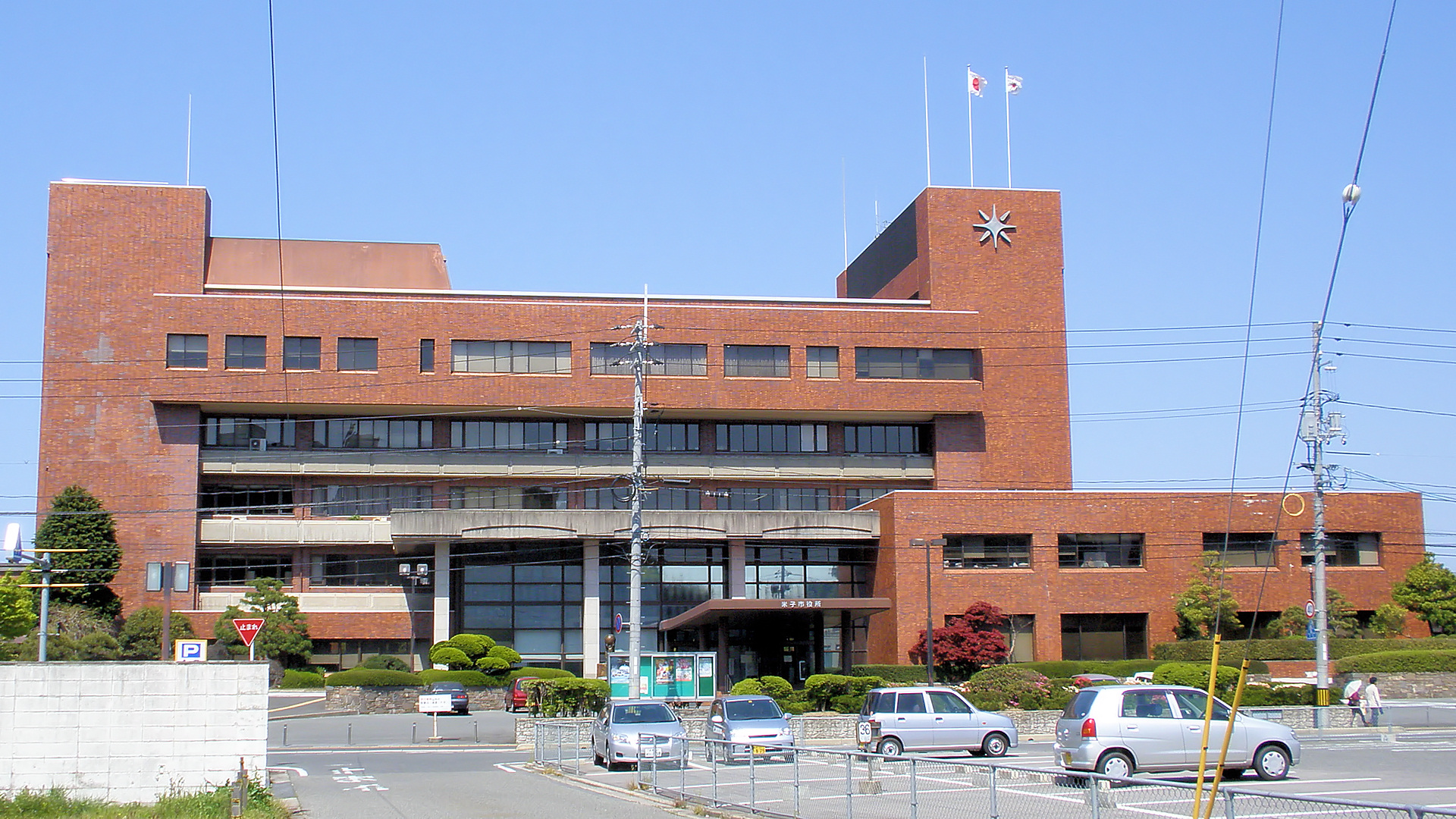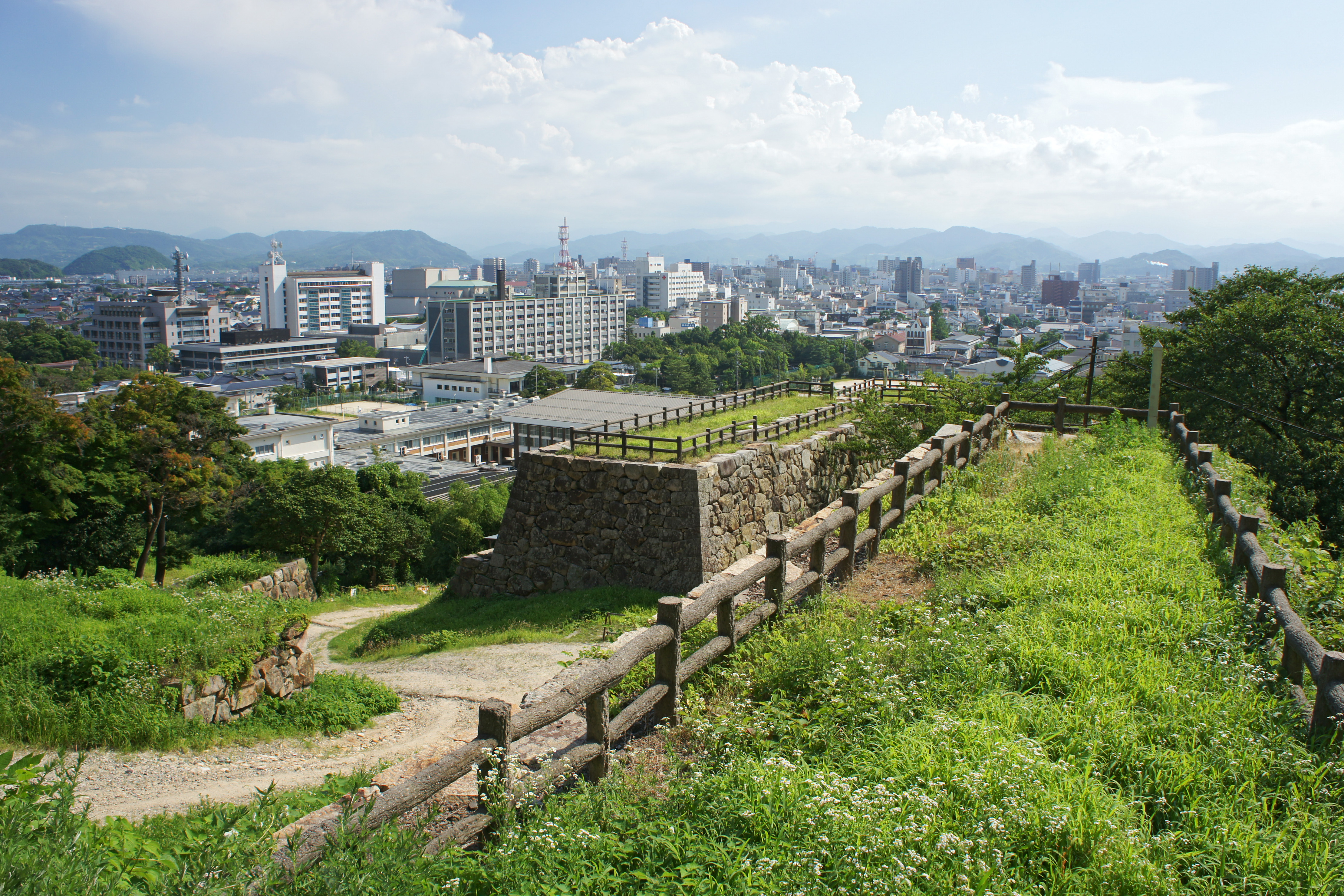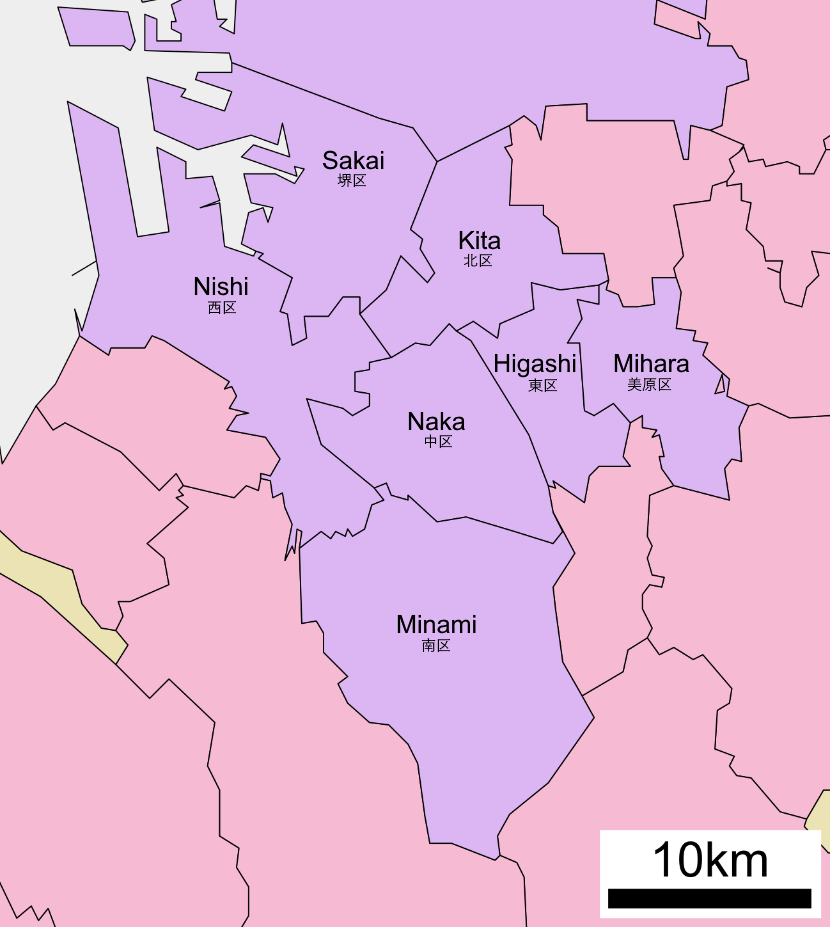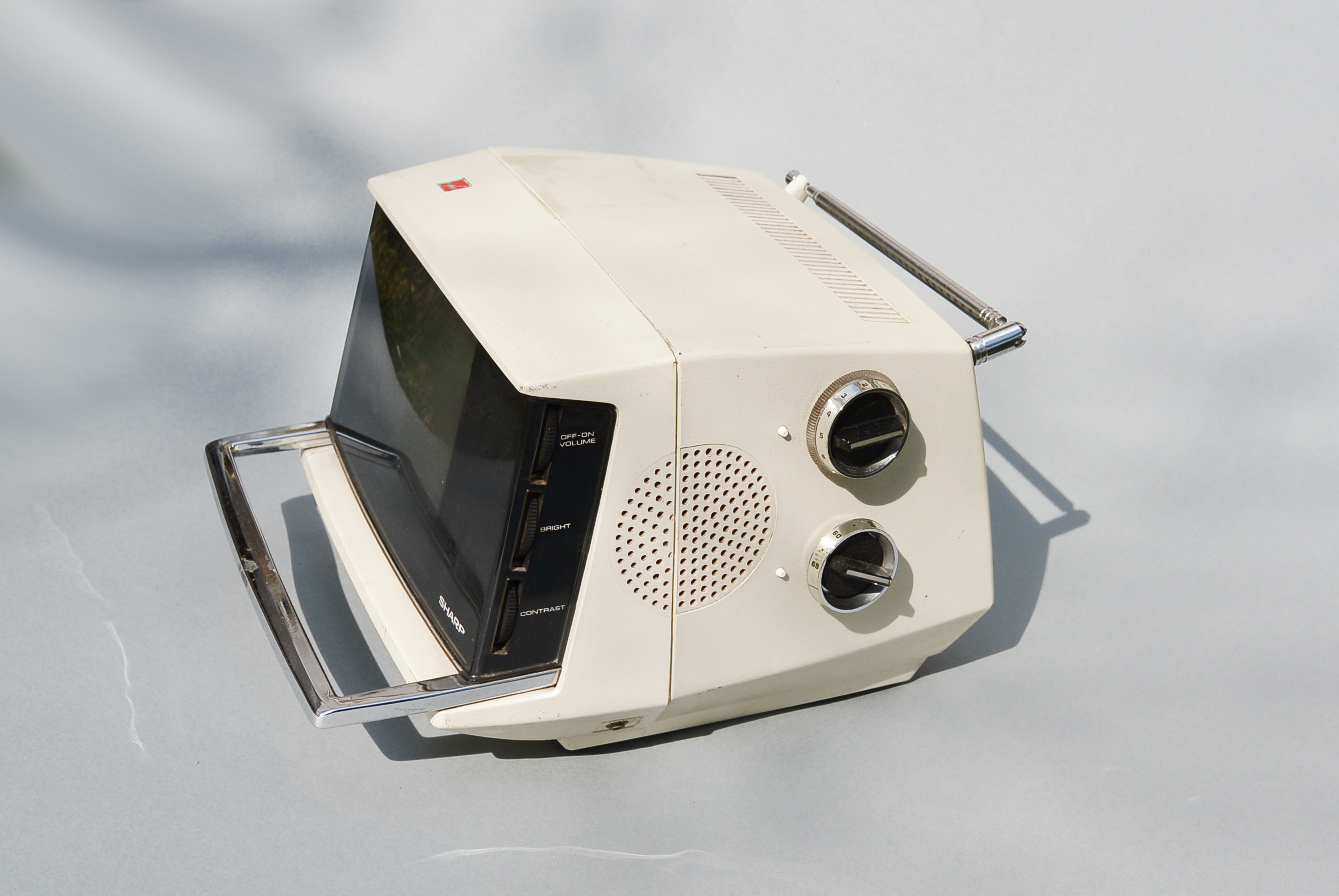|
Yonago, Tottori
is a city in western Tottori Prefecture, Japan, facing the Sea of Japan and making up part of the boundary of Lake Nakaumi. It is adjacent to Shimane Prefecture and across the lake from its capital of Matsue. It is the prefecture's second largest city after Tottori, and forms a commercial center of the western part of this prefecture. As of October 1, 2017, the city has an estimated population of 148,720 and a population density of 1,100 persons per km2. The total area is 132.21 km2. It is home to the Yonago City Museum of Art. Kaike Onsen, which sits along the Miho Bay and is part of Yonago, is said to be the birthplace of the triathlon in Japan. Since the city has begun to develop into a trade center of note, it has acquired the nickname ''Osaka in San-in''. Etymology The name of Yonago in the Japanese language is formed from two ''kanji'' characters. The first, , means "rice", and the second, means "child". History Yonago was first formally organized as a town in O ... [...More Info...] [...Related Items...] OR: [Wikipedia] [Google] [Baidu] |
Cities Of Japan
A is a local administrative unit in Japan. Cities are ranked on the same level as and , with the difference that they are not a component of . Like other contemporary administrative units, they are defined by the Local Autonomy Law of 1947. City status Article 8 of the Local Autonomy Law sets the following conditions for a municipality to be designated as a city: *Population must generally be 50,000 or greater (原則として人口5万人以上) *At least 60% of households must be established in a central urban area (中心市街地の戸数が全戸数の6割以上) *At least 60% of households must be employed in commerce, industry or other urban occupations (商工業等の都市的業態に従事する世帯人口が全人口の6割以上) *Any other conditions set by prefectural ordinance must be satisfied (他に当該都道府県の条例で定める要件を満たしていること) The designation is approved by the prefectural governor and the Minister for Inter ... [...More Info...] [...Related Items...] OR: [Wikipedia] [Google] [Baidu] |
Tottori, Tottori
is the capital and the largest city of Tottori Prefecture in the Chūgoku region of Japan. Within Japan the city is best known for its sand dunes which are a popular tourist attraction, drawing visitors from outside the prefecture. The sand dunes are also important as a centre for research into arid agriculture, hosting Tottori University's Arid Land Research Center. Most of Tottori is located in the western part of the San'in Kaigan Geopark. , the city has an estimated population of 192,912 and a population density of 250 persons per km2. The total area is 765.31 km2. Geography The city of Tottori which located in east next to the Chūgoku Mountains, the city flows the Sendai River. Much of city's gained as for result of mergers and neighboring satellite towns. Neighboring municipalities Tottori Prefecture * Yazu * Misasa *Chizu * Iwami * Yurihama * Wakasa Hyōgo Prefecture * Shin'onsen Okayama Prefecture * Kagamino * Tsuyama Climate ... [...More Info...] [...Related Items...] OR: [Wikipedia] [Google] [Baidu] |
Sakai Line
is a city located in Osaka Prefecture, Japan. It has been one of the largest and most important seaports of Japan since the medieval era. Sakai is known for its keyhole-shaped burial mounds, or kofun, which date from the fifth century and include Daisen Kofun, the largest grave in the world by area. Once known for swords, Sakai is now famous for the quality of its cutlery. , the city had an estimated population of 819,965, making it the fourteenth most populous city in Japan (excluding Tokyo). Geography Sakai is located in southern Osaka Prefecture, on the edge of Osaka Bay and directly south of the city of Osaka. Neighboring municipalities Osaka Prefecture *Osaka *Matsubara *Habikino *Ōsakasayama *Kawachinagano *Izumi * Takaishi Climate Sakai has a Humid subtropical climate (Köppen ''Cfa'') characterized by warm summers and cool winters with light to no snowfall. The average annual temperature in Sakai is . The average annual rainfall is with June as the wettest month. ... [...More Info...] [...Related Items...] OR: [Wikipedia] [Google] [Baidu] |
Yonago Station
is a railway station on the Sanin Main Line in Yonago, Tottori Prefecture, Japan, operated by West Japan Railway Company (JR West). It is also the terminus of the Sakai Line. The station started operation on November 1, 1902. Layout The station has one side platform, two island platforms, and one bay platform. See also * List of railway stations in Japan The links below contain all of the 8579 railway stations in Japan. External links {{Portal bar, Japan, Trains * Railway stations Japan ... External links Yonago Station(JR West) Stations of West Japan Railway Company Railway stations in Japan opened in 1902 Railway stations in Tottori Prefecture Sanin Main Line Yonago, Tottori {{Tottori-railstation-stub ... [...More Info...] [...Related Items...] OR: [Wikipedia] [Google] [Baidu] |
Yonago St
is a city in western Tottori Prefecture, Japan, facing the Sea of Japan The Sea of Japan is the marginal sea between the Japanese archipelago, Sakhalin, the Korean Peninsula, and the mainland of the Russian Far East. The Japanese archipelago separates the sea from the Pacific Ocean. Like the Mediterranean Sea, it h ... and making up part of the boundary of Lake Nakaumi. It is adjacent to Shimane Prefecture and across the lake from its capital of Matsue. It is the prefecture's second largest city after Tottori, Tottori, Tottori, and forms a commercial center of the western part of this prefecture. As of October 1, 2017, the city has an estimated population of 148,720 and a population density of 1,100 persons per km2. The total area is 132.21 km2. It is home to the Yonago City Museum of Art. Kaike Onsen, which sits along the Miho Bay and is part of Yonago, is said to be the birthplace of the triathlon in Japan. Since the city has begun to develop into a trade center of n ... [...More Info...] [...Related Items...] OR: [Wikipedia] [Google] [Baidu] |
Yonago City Office
is a Cities of Japan, city in western Tottori Prefecture, Japan, facing the Sea of Japan and making up part of the boundary of Nakaumi, Lake Nakaumi. It is adjacent to Shimane Prefecture and across the lake from its capital of Matsue. It is the prefecture's second largest city after Tottori, Tottori, Tottori, and forms a commercial center of the western part of this prefecture. As of October 1, 2017, the city has an estimated population of 148,720 and a population density of 1,100 persons per km2. The total area is 132.21 km2. It is home to the Yonago City Museum of Art. Kaike Onsen, which sits along the Miho Bay and is part of Yonago, is said to be the birthplace of the triathlon in Japan. Since the city has begun to develop into a trade center of note, it has acquired the nickname ''Osaka in San-in''. Etymology The name of Yonago in the Japanese language is formed from two ''kanji'' characters. The first, , means "rice", and the second, means "child". History Yonago was ... [...More Info...] [...Related Items...] OR: [Wikipedia] [Google] [Baidu] |
Sharp Corporation
is a Japanese multinational corporation that designs and manufactures electronic products, headquartered in Sakai-ku, Sakai, Osaka Prefecture. Since 2016 it has been majority owned by the Taiwan-based Foxconn Group. Sharp employs more than 50,000 people worldwide. The company was founded in September 1912 in Tokyo and takes its name from one of its founder's first Ever-Sharp mechanical pencil, which was invented by Tokuji Hayakawa in 1915. History Early years 1912–1945 In 1912, Tokuji Hayakawa founded a metal workshop in Tokyo. The first of his many inventions was a snap buckle named 'Tokubijo'. Another of his inventions was the Ever-Ready Sharp mechanical pencil in 1915. The product became one of the first internationally available mechanical pencils (while concurrent US design replaced it soon and became a modern type), and due to this big success the Sharp Corporation derived its name from it. After the pencil business was destroyed by the 1923 Great Kantō earthqu ... [...More Info...] [...Related Items...] OR: [Wikipedia] [Google] [Baidu] |
Oji Paper Company
is a Japanese manufacturer of paper products. In 2012 the company was the third largest company in the global forest, paper and packaging industry. The company's stock is listed on the Tokyo Stock Exchange and the stock is constituent of the Nikkei 225 stock index. Operations Oji Paper produces paper for printing, writing, and packaging. It also manufactures containers made from paper products, chemicals used in the production of paper and paper packaging equipment. The company has 86 production sites throughout Japan, and forestry operations in Australia, Brazil, Canada, China, Germany, New Zealand and other countries worldwide. History Oji Paper Company was founded February 12, 1873 by industrialist Shibusawa Eiichi as . Mills were established in 1875 in the village of Ōji, at the time a suburb of Tokyo, and in 1889 in Shizuoka. In 1893 Shibusawa renamed the company Oji Paper after the location of its first mill. William Anderson went to Japan to oversee the erec ... [...More Info...] [...Related Items...] OR: [Wikipedia] [Google] [Baidu] |
Saihaku District, Tottori
is a district located in Tottori Prefecture, Japan. As of 2003, the district has an estimated population of 50,436 and a density of 135.28 persons per km2. The total area is 372.83 km2. Towns and villages * Daisen * Hiezu * Hōki * Nanbu Mergers *On October 1, 2004 the towns of Saihaku and Aimi merged to form the new town of Nanbu. *On January 1, 2005 the town of Kishimoto merged with the town of Mizokuchi from Hino District to form the new town of Hōki in Saihaku District. *On March 28, 2005 the towns of Nakayama and Nawa merged into the town of Daisen. *On March 31, 2005 the town of Yodoe merged into the city of Yonago is a city in western Tottori Prefecture, Japan, facing the Sea of Japan and making up part of the boundary of Lake Nakaumi. It is adjacent to Shimane Prefecture and across the lake from its capital of Matsue. It is the prefecture's second large .... Districts in Tottori Prefecture {{Tottori-geo-stub ... [...More Info...] [...Related Items...] OR: [Wikipedia] [Google] [Baidu] |
Yodoe, Tottori
was a town located in Saihaku District, Tottori Prefecture, Japan. As of 2003, the town had an estimated population of 8,852 and a density of 343.10 persons per km². The total area was 25.80 km². On March 31, 2005, Yodoe was merged into the expanded city of Yonago is a city in western Tottori Prefecture, Japan, facing the Sea of Japan and making up part of the boundary of Lake Nakaumi. It is adjacent to Shimane Prefecture and across the lake from its capital of Matsue. It is the prefecture's second large .... External links Yonago official website Dissolved municipalities of Tottori Prefecture Yonago, Tottori {{Tottori-geo-stub ... [...More Info...] [...Related Items...] OR: [Wikipedia] [Google] [Baidu] |
Kanji
are the logographic Chinese characters taken from the Chinese script and used in the writing of Japanese. They were made a major part of the Japanese writing system during the time of Old Japanese and are still used, along with the subsequently-derived syllabic scripts of '' hiragana'' and '' katakana''. The characters have Japanese pronunciations; most have two, with one based on the Chinese sound. A few characters were invented in Japan by constructing character components derived from other Chinese characters. After World War II, Japan made its own efforts to simplify the characters, now known as shinjitai, by a process similar to China's simplification efforts, with the intention to increase literacy among the common folk. Since the 1920s, the Japanese government has published character lists periodically to help direct the education of its citizenry through the myriad Chinese characters that exist. There are nearly 3,000 kanji used in Japanese names and in comm ... [...More Info...] [...Related Items...] OR: [Wikipedia] [Google] [Baidu] |
Miho Bay
is a bay on the north coast of western Honshu, the largest island of Japan. The bay faces the Sea of Japan and within the borders of Tottori Prefecture. Miho bay is bounded to the west by Yumigahama Peninsula, which forms the western border with Shimane Prefecture. Geography Miho Bay is approximately in length, extends from the coast, and has a depth of . The bay has an average temperature of between 20 and 22 °C. Miho Bay is generally defined as extending from the mouth of the Amida River in Daisen to the east and Cape Jizō at the tip of the Shimane Peninsula to the west. Miho Bay is naturally protected by numerous reefs and the quicksand of the Hino River, but as these natural areas of protection have decreased, coastal erosion has become a problem along the bay. Miho Bay was known historically as a safe harbor. Coastal cities and towns Miho Bay is faced by the coastal cities and towns of and Matsue, Shimane Prefecture, Sakaiminato and Yonago make up the Y ... [...More Info...] [...Related Items...] OR: [Wikipedia] [Google] [Baidu] |







